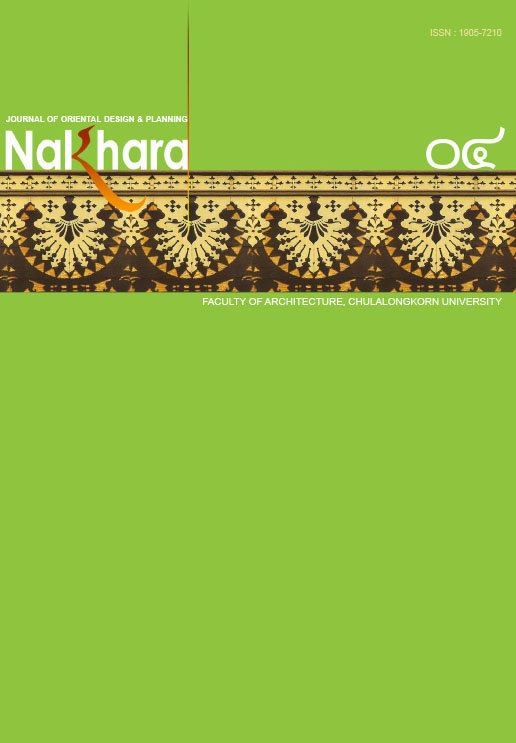THE LOGIC OF MULTI-USE OF PUBLIC OPEN SPACES IN CHIANG MAI CITY
Main Article Content
Abstract
This study aims to define the logic of the multi-use of public open spaces in Chiang Mai
City by taking into account people, time and activity diversity. The study hypothesizes
that the multi-use of public open spaces is influenced by three significant factors, namely
specific characteristics of space, urban morphological structure, and users.
The research methodology consists of surveying forty-two public open spaces in Chiang Mai
City. The resulting data are then used to conduct matrix analyses and the analysis of urban
morphological structure using overlay mapping and figure-ground techniques. The study
areas are grouped according to district, function, setting, and management. Subsequently
three public open spaces, namely Ratchadamnoen Walking Street, Warorot Market Street, and
the footpath behind Chiang Mai University are chosen for detailed study of users through
questionnaire. The result of the study supports the hypothesis. It reveals that the three factors
–specific characteristics of space, urban morphological structure and users– accounted for the
multi-use of public open spaces at three different levels. The first level concerns basic factors,
the second level concerns supporting factors and the third level concerns attraction factors. It
also reveals that the effective multi-use of public open spaces depends on the appropriate
combination of these factors.

